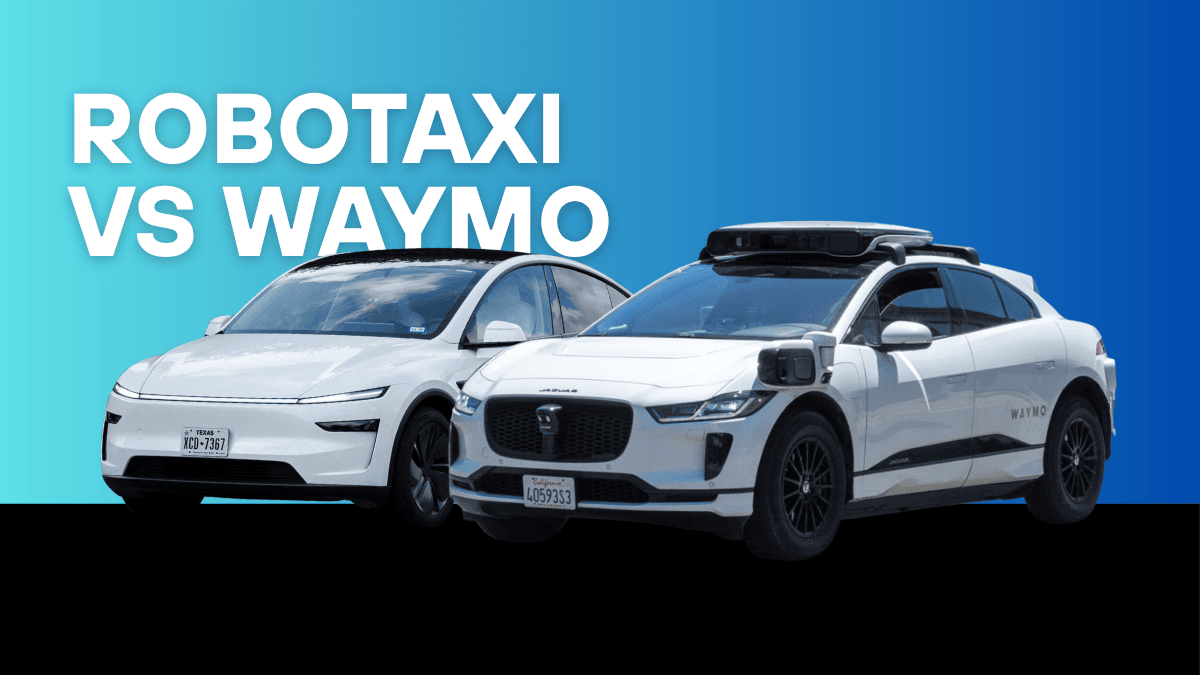The long-awaited battle between Tesla’s Robotaxi and Waymo finally hit the streets—and not in simulation or theory, but in a real, unscripted race through the roads of Austin. In the video “Tesla Robotaxi vs Waymo | Didn’t Expect This,” creators Dan and Kim do something EV fans have been itching to see: pit two of the biggest names in autonomous vehicles against each other in a side-by-side comparison. What happens is insightful, occasionally jarring, and full of unexpected moments.
Let’s break it down.
The Setup: A Friendly Yet Fierce Race
The video kicks off with a quirky but clever premise—two autonomous cars, two humans, and one question: Which self-driving system is smarter, safer, and quicker?
Kim, one of only 20 people granted early access to Tesla’s Robotaxi service, takes the wheel—or rather, lets the Tesla drive itself. Dan hops into a Waymo, which has been operating for years with millions of self-driven miles under its belt.
Tesla’s system, built purely on cameras and neural nets (no LiDAR), is betting everything on its AI vision. Waymo, on the other hand, plays it safe with an array of sensors, including LiDAR and radar, aiming for precision at every turn.
The Journey: Smooth for Some, Bumpy for Others
Here’s where things get spicy. From the jump, Waymo had a slight edge—it was already pointed in the right direction. Tesla had to make a turnaround just to start the race. Already, there’s an argument to be made about which system is smarter in planning pickups.
Waymo pulled ahead initially and appeared to cruise with confidence. The Tesla, while comfortable and packed with data-driven intuition, experienced one of those infamous “phantom braking” episodes. This abrupt, jarring stop threw belongings across the cabin. If you’ve driven a Tesla on FSD Beta, you know exactly what that feels like.
Interestingly, while the Tesla was technically slower and had a bumpier ride, it still managed to arrive just minutes behind the Waymo. The Tesla system took a different route—arguably less efficient—but managed to make up time with higher top speeds, sometimes pushing 50 mph.
The Tech: Vision vs. Sensors
One of the most fascinating takeaways is the tech comparison. Waymo’s vehicle is a sensor-laden spaceship bristling with rotating LiDAR units and radar domes. Tesla’s Robotaxi? A regular-looking Model Y outfitted with cameras and AI smarts that rely on vision processing alone.
While Tesla’s approach is certainly scalable and cost-efficient, the video exposes the current limitations—particularly in lighting conditions like sun glare. The Waymo handled visual challenges more gracefully, though both systems seemed competent in traffic.
The Verdict: It’s Not Just About Speed
Despite the playful competition, the creators are fair in their assessment. Waymo came out ahead in this round. It was more polished, more reliable, and had fewer “oh-no” moments. But that’s not to say Tesla lost. In fact, considering this was day one of public Robotaxi use, Tesla’s performance was impressive.
Both Kim and Dan agree: Tesla’s AI learning curve is steep. With billions of miles of data and fast iteration cycles, the gap could narrow quickly.
The real kicker? Tesla’s entrance into this space might actually benefit Waymo. Just like competition in any emerging tech, two players in the field raise public trust, normalize the technology, and create more momentum overall. As the creator puts it, “The rising tide lifts all boats.”
Final Thoughts
As someone who’s followed autonomous tech closely, this video was not only entertaining but eye-opening. Tesla’s Robotaxi may be a rookie in the ride-hailing game, but it’s a fast learner. Waymo remains the gold standard for now, but Tesla’s vision-based system, paired with its relentless pace of innovation, could rewrite the rules sooner than we think.
If you’re wondering which one you’d trust to get you across town—well, after watching this, it depends. Do you want refined reliability today, or are you betting on revolutionary speed tomorrow?
Either way, buckle up. The future of driverless mobility is here—and it’s got a stopwatch.
Watch the full video on Kim’s YouTube channel here – Kim Java
👉 Please 📩SUBSCRIBE to us for more real-world EV analysis, news, and deep dives — written for EV fans by EV fans.
Hey, I’m Badal! I’m super passionate about cars—especially electric ones. Whether it’s EVs, electric trucks, bikes, or anything with a battery and wheels, I’m all in. I love writing blogs and articles that break things down for fellow enthusiasts and curious readers alike. Hope you enjoy the ride as much as I do! Enjoyed reading? You can buy me a coffee on PayPal ☕ → paypal.me/BadalBanjare

[…] Tesla’s Cybercab isn’t expected until 2027, and Waymo still faces safety controversies, Volkswagen is avoiding the hype machine and focusing on […]
[…] to Waymo’s vans, the Teslas’ ride felt significantly smoother, with soft acceleration, gentle braking, and […]